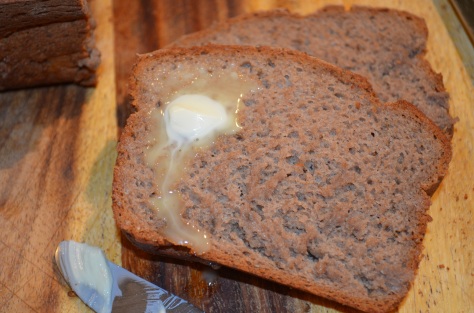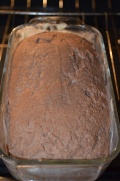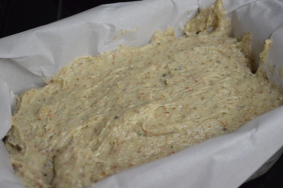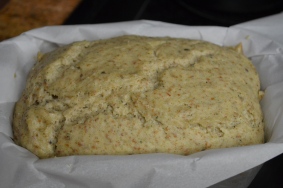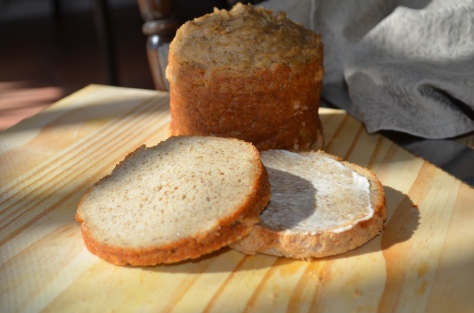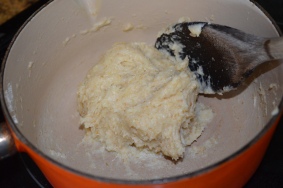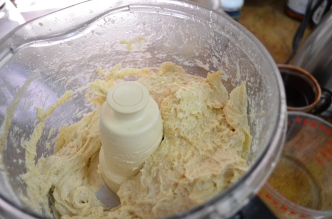
Fresh almond brioche.
In my pre-gluten-free days I loved to make bread. I made crusty French bread and honey wheat bread, free-form white farmhouse loaves and soft bread rolls flavored with black olives and rosemary, pizzas and bread encrusted pies. When the bomb was dropped that I could no longer eat wheat, I was devastated.
Only temporarily deterred, I’ve since made dozens of loaves of GF bread with various ingredients and with varying degrees of success. One of the battles I’ve fought has been a nutritional one. If you’ve not had a chance to check out my post ‘Exactly Why am I Eating This?’ you might find it an eye-opener. Neither rice flour nor tapioca flour/starch is a good base for gluten free bread nutritionally, but just choosing a flour with a good nutritional content isn’t really the whole story, since different flours have different flavors and structural properties.
One of my favorite flours is almond. It is one of the fussier flours, in my opinion, prone to sucking up moisture and making a soggy product if not handled right, but it has a lovely flavor and a decent nutritional profile (particularly good for diabetics, I’m told, due to lower carbohydrate content).
Baking gluten free bread is not the same as baking wheat based bread. For starters, you need far more ingredients which perform various functions and can’t really be left out. Don’t let this deter you, since once you’ve done it a couple of times, you’ll find it all comes together in an acceptable period of time. It’s NOT a complicated recipe. For a sweet variation: Add 1/3 cup each honey, walnuts, and raisins, and use sweetened vanilla almond milk instead of unsweetened plain almond milk.

This is a good batter consistency to aim for, but I wouldn’t want it any drier.
.
The trick is to get the batter the right consistency. Once the batter has been worked in the processor for a couple of minutes, it should look like the picture on the left and less like the picture below.
.

If your batter looks more like this, then you need to be more careful with your timing of the rise and transfer to the oven, and you run the risk of producing a damp loaf.
Almond Brioche Bread is rich in flavor with a meltingly soft mie, and a crunchy, but not hard, deep brown crust. It is rich, it isn’t a bog standard bread; this bread is a treat in its own right, not an imitation. My husband says he would be perfectly happy if I never made regular bread again since we introduced this item to our kitchen. This works fine for me, as the bread freezes well. I slice mine before freezing in a freezer bag, and then toast individual slices as and when we need them.
Note that although I’ve given volume measurements for most of the ingredients, this is an area of cooking which is better if done by weight (also included) for the flours since this is a more accurate method.
Almond Brioche
2 cups (8 oz) almond flour (preferably from blanched almonds)
1 cup (5 oz) tapioca flour
1/4 cup (1 oz) flax seed meal
1 1/2 tsp salt
1 tbsp xanthan gum
1 1/2 tbsp yeast
1/2 – 1 cup (4 – 8 fl. oz) water or unsweetened non-diary milk
2 large eggs and 3 egg whites
2 tsp wine vinegar
3 tsp maple syrup
1/4 cup margarine (optional – for richness)
Put all the dry ingredients together in a food processor, and the wet ingredients in a measuring jug. Start processing. Gradually (over a period of about 10 seconds) pour all the egg and 1/2 of the milk into the processor, and process for about 3 minutes, scraping down occasionally, if required. Adjust consistency after a minute or two with the additional dairy free milk, if necessary. (The flax meal takes about this amount of time to absorb liquid and thicken the mixture – check out my pictures, above.)
Turn the mixture into a medium sized loaf pan lined with parchment paper, or pipe/scoop into 12 rolls onto a parchment lined cookie tin, or 3 baguettes on a lined French bread former.
Leave to rise for 30-60 minutes.

These loaves are sitting in the cold oven rising with foil in place above them ready for cooking. Note that you can cook the bread starting in a cold oven providing you add 5 – 10 minutes to the cooking time, and turn the oven on just before cracks start to form in the rising batter.
Your bread is ready to go in the oven when it has risen by about 50% and cracks have just started to appear on the surface.

Once cracks start to form on the top of the loaf, it is time for it to go in the preheated oven (it probably won’t wait 10 minutes while the oven warms up).
Cook for 90 minutes (50 minutes for rolls) at 350F on the middle shelf, lightly covered with tin foil or parchment to prevent over browning (I put mine on the shelf just above the bread).
Allow to cool completely (ha ha) before slicing, so that it has time to set.
 4 oz brown sugar
4 oz brown sugar


